Features
Jacob Slichter: The Daily Vault Interview
by Jason Warburg
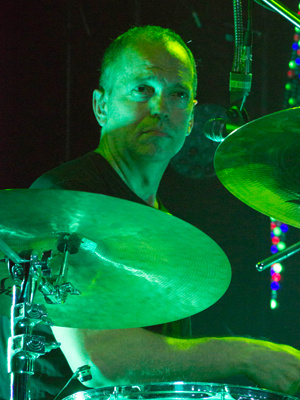
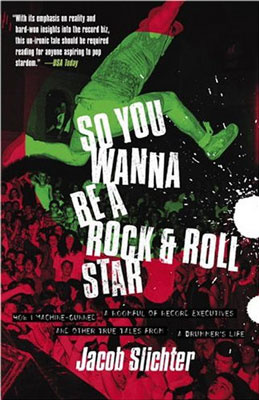
In the short history of rock and roll memoirs—which for obvious reasons have been a thing for only a few decades now—my favorite has long been So You Wanna Be A Rock & Roll Star by Jacob Slichter. The drummer for Semisonic, the Minneapolis trio that burned brightly across the media heavens circa 1998, Slichter proceeded to pen one of the most piercingly witty and self-aware autobiographies in the genre, cast in the role of the insightful Everyman who thinks—and reveals—all of the thoughts that you or I might have if we suddenly found ourselves thrust into the funhouse-mirror world of chart-topping rock and roll hitmakers.
The band arrived at that pinnacle—achieving a #1 Alternative hit with the ubiquitous “Closing Time”—just five years after coming together as a musical vehicle for three friends: Slichter, his college pal Dan Wilson (lead vocals, guitar), and John Munson (bass, backing vocals). (Wilson and Munson had previously played together in indie cult darlings Trip Shakespeare, which had just broken up when Semisonic—initially called Pleasure—formed.) Semisonic followed “Closing Time” and its accompanying smash album Feeling Strangely Fine with the less commercially successful collection All About Chemistry before being dropped by MCA.
Semisonic then slipped into a lengthy hiatus that saw each member pursue alternate creative avenues: Wilson wrote songs for himself and others; Munson started a new band (The New Standards); and Slichter wrote his book. In time, Slichter’s writerly pursuits led to a gig teaching writing at Sarah Lawrence College in his current home base of New York City. (He also launched a warm and welcoming presence on social media, where we first connected years ago.)
Despite going on the back burner for an extended period, Semisonic never broke up. Friends first, then and now, the trio continued to collaborate in various ways, play the occasional reunion gigs, and talk about making new music together. The latter pursuit eventually moved from theory to reality, and in 2020 the group released a new EP titled You’re Not Alone. This month will see the first full-fledged tour by Semisonic—second-billed with the Barenaked Ladies and Del Amitri on a string of shed dates—in 22 years. The group has also been busy recording new music.
It's exciting times for a band that went quiet but never went away—anchored by bonds of friendship that feel as genuine today as they did in 1998—and a great time to catch up with the man behind the kit. Our chat with Jacob Slichter last week covered everything from meeting Dan Wilson in college, to playing the Letterman show, earning a compliment from Carole King, strategies for dealing with stage fright, and what’s next on the horizon for both the band and its resident drummer, author, and teacher.
The Daily Vault: From time to time I think about how my life might have turned out differently if just one or two variables had been changed along the way. Which led to me thinking about the path you’ve taken. Fresh out of high school, you went off to Harvard, where you met a classmate named Dan Wilson. What were your first impressions?
Jacob Slichter: I had been at Harvard for a week, and it was such a weird place that I just wanted to spend time at my drums, because I felt more comfortable there. The day my drums arrived, my roommates helped me go get them and I set up and started playing in the dorm’s common room. After a minute or two a head popped into the doorway, and I don’t even know if we introduced ourselves right away, but this guy said “I’m gonna go get my bass, I’ll be right back.” Five minutes later, the person I came to know as Dan Wilson rolled in an amp and his bass. I think we introduced ourselves then, but we didn’t really even talk at first; we spent an hour or so just playing. Our first real conversation was just grooving together on the drums and bass.
And then we got to talking and getting to know each other. All that first year—especially that fall when you’re sort of meeting all the musicians and figuring out who you want to be hanging out with—Dan and I would go off to various jams. These would usually be Dan on bass, me on drums, and, like, 15 guitar players who want to play the blues. (laughter) And so we’d sit around playing very slowly, like “dun… dun… dun… dun…” (more laughter) And each guitar player would take a turn, and it was just horrifically boring.
But Dan and I quickly found our way to the people who wanted to jam a little more creatively than that, and then Dan started getting involved in other bands, but we kept in touch the whole time. In the last year of school, in the spring we got together and had a band with a friend of ours named Hal Movius.
At that point, Dan’s girlfriend was moving out to San Francisco and he was going to follow her. I didn’t know what the hell I was going to do after school, I just knew I wanted to make music—and I was making music with Dan, so I followed along. We got rolling, and then Dan moved back to Minneapolis to join his brother’s band, Trip Shakespeare. A few years later I moved to Minneapolis too, just because I knew people there, not with any plan of doing anything with Dan, because he was already in a band. And then Trip Shakespeare broke up, and Semisonic happened…
Where in that sequence of events did you connect with John, and what were your first impressions?
I met John when Dan got married; my first trip to Minneapolis was for Dan and his girlfriend Diane’s wedding. I flew out to Minneapolis a few days ahead of time and Trip Shakespeare was in the studio. I met John while he was perched over the control board at Gark Studios. I had an instant, very strong connection with John, too.
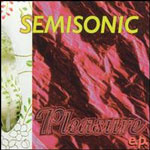
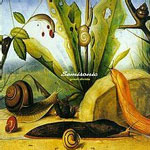
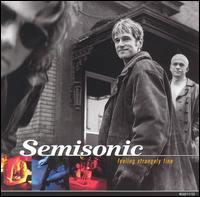
Thinking about Semisonic’s initial run in the ’90s, you’ve said that for all the ups and downs, you wouldn’t trade a minute of that whole experience. You’ve also described yourself as incredibly lucky, which strikes me as typically modest of you, but come on. Talent and hard work had to have something to do with it, too.
I think that hard work is a necessary but not always sufficient condition for success. I don’t think you can have success without it. Maybe some other form of success would have come to me under different circumstances, I don’t know. I do know that I look at what happened to me and think, “Dude, you were very lucky.”
I still practice a lot. I think practice is essential. You’ve got to work hard, you’ve got to write a lot of songs, or do a lot of whatever it is you want to do, in order to make it happen. But I also know that I feel very lucky about it.
In So You Want to be a Rock & Roll Star, you talk a lot about anxiety and stage fright, and also about the rush of being on stage and performing. Why do you think humans are drawn to doing things that frighten us?
There are different answers to that depending on which version of it you’re talking about. I’ve been watching the 100 Foot Wave series on HBO, about surfers surfing these gigantic waves off the coast of Portugal. I would never do that, never in my life, but I’m kind of fascinated by thrill-seekers. They’re up against the very limits of what they can do. These are the greatest surfers in the world, and they’re all scared out of their minds, because they can be killed, or horrifically injured.
That’s one kind of danger that humans are drawn to; I’ve never related to that. But I am drawn to, I would say, showing myself. There’s a performer version of that which requires a stage and happens in real time, and that’s where a lot of my stage fright stuff shows up. I think also with writing—and you can probably relate to this—to really say it, sometimes you have to push yourself to a place that is frightening, and vulnerable, and if you stop short of that, you haven’t done it.
I think that’s part of what drives any artist or performer—the desire to show your full self, to own that for yourself. To do it in front of people in a live setting really does get your fight-or-flight body processes going in a pretty intense way. And I think the volume level of rock and roll and the energy of a rock audience and the amps and the drums and everything, it turns everything up to eleven. And so if you’ve got stage anxiety, as I always have, you really do have to come up with some strategies for how you’re going to deal with it, because it’s just going to be there.
In the thick of things in the late ’90s, Semisonic played The Late Show, The Tonight Show and half a dozen or so other major TV appearances. Please share your favorite green room story.
It’s not exactly a story, but one incredible experience was the unexpected joy of being able to talk with the actor Peter Boyle and tell him how much his performances and various moments in his acting career had meant to me. What was really special about it was that he just rolled with it and was very open. You could see him rewinding the tape in his mind to get back into each moment and talk about it. It was just super humbling, to have such a talented artist be willing to open up like that to a stranger. He had no idea who Semisonic was, I don’t think he had ever heard “Closing Time” before hearing it over the monitors in his dressing room at the Letterman show. Talking with him was a wonderful insight into what artists can be, for themselves and for other people.
I also remember when we appeared on Loveline with Adam Carolla and Dr. Drew, the advice show for teenagers and college-age folks wondering about drugs and sex and stuff. We were backstage for that show and Miguel Ferrer was there and he knew Semisonic and told us how much he loved us. And I was just so knocked out, because I was a huge Miguel Ferrer fan.
What stands out isn’t so much one story as it is all the unexpected things that happen when you’re suddenly in close proximity with people you’ve admired your whole life.
A related question, about your appearance on The Late Show: how did a person who sometimes experiences stage fright end up deciding it would be a good idea to play drums and keyboards at the same time, on live television? (See video above...)
Yeahhh. (laughter) It’s interesting—in a way, that really helps. It gives your mind so much to think about. The thing I learned to do is to make a mental checklist of everything I had to do.
With that performance, the first thing was, count off at the right tempo—and how do I get the right tempo, and all that. Then, wait. Then start with a pickup note on the keyboard and then slam in on the drums. The whole time I had a very detailed checklist in my mind of the next thing I had to do. At no point can you be thinking “Whoooaaa, I’m on Letterman!!” (laughter) You cannot think that. You have to think “Okay, here comes the verse. Tighten up the hi-hat. Keep the groove going. Here’s a quick fill into the pre-chorus, and now a longer, bigger fill into the chorus. Don’t rush, but make it big. And get ready, here we go, back to the keyboard…”
I’m thinking all of that in the moment. Only later, when you get back to your hotel and turn the TV on and watch the broadcast are you able to say “Okay, there we are on Letterman!”
In an interview you did with my friend Richard Fulco a few years ago, you talked about being the Ringo of Semisonic. You said “When you’re a kid and you’re fantasizing about being a rock star, you don’t fantasize about being the third most appealing guy in a trio. You want to be Sting, not Andy Summers.” That cracked me up not only because it was so honest, but because Andy Summers wrote my next favorite rock autobiography after yours, about his time in The Police. He took a different approach, but some of the themes were similar—for example, the perspective he had on the band experience as a person who was at the center of it, without being the group’s focal point.
Right. In a way, that’s a great treat. You get a very favorable ratio of joyride to responsibility. (laughter) I think I actually have kind of the best deal in our band that way. There’s pressure on everybody in the band, but I would say I have probably the most enviable ratio of joy to responsibility.
Except when they want you to play drums and keyboards simultaneously on live TV…
(laughter) Well, there you go. Those bastards, they oughta be more grateful. (more laughter)
Moving ahead to the All About Chemistry period, Carole King co-wrote “One True Love” with Dan for the album, and sang harmony on the track. In the book you describe how she recorded remotely and sent her parts in, but I understand you got to meet her at the mixing session. What was that like?
Oh, it was amazing. First of all, I grew up totally hooked on Carole King. She is one of a very few non-drummers who influenced my drumming. The way she bangs a piano, her groove as a keyboardist is just incredible. Plus she’s a fabulous singer, a very underrated singer in my opinion—not that anyone thinks she’s bad, but more people should acknowledge how amazing her voice is. And she has such a great feel in all of her music.
At the mix, she sat down in one of those rolling chairs in front of the console and listened to the song, and we just kind of left her in the front row by herself. She moved so much in her seat, I think that’s just how she relates to music and that was very instructive to me. It was like, no wonder her music speaks the way it does—that’s how into it she is, physically.
And then afterwards, she said, “Who’s the drummer?” And I very cautiously raised my hand… And she says “It’s got such a nice bounce.” And I was like Oh my God!
I can die happy now.
Seriously! I will never get a better compliment than that. She may have been being nice, but I don’t think she was, I think she actually meant it. She’s fierce. She’s a force of nature. And for her to say that, that is on the mantelpiece in the drum room of my mind.
As soon as you started describing how rhythmic her piano-playing is, all I could hear in my head was the riff to “I Feel The Earth Move”…
Yeah! Exactly, or “Jazzman,” or any of that stuff.
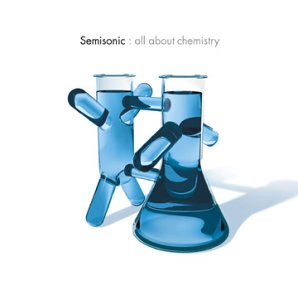
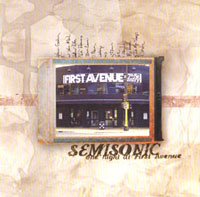
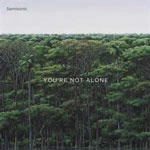
As much as I’ve wanted to hear new music from you guys all these years, I’ve also thought a few times that “El Matador” [written by Slichter, and closing out All About Chemistry] was the perfect “closing credits” song for both that album and, at the time, for the band. There’s a wistfulness about it, and a whiff of nostalgia.
Yeah. It’s weird, we played it at our shows in January; I was so thrilled that Dan wanted to do it. I don’t really think of the song as being about any specific thing, it was more about a feeling I was having at the time. But when Dan introduced it, he said “This is a song about turning 40.” (laughter) And everybody laughed, because we’re so much older than that now.
I think I knew at the time that we had something special going on and that all of the things I had in my life right then were not going to last forever. Some of them lasted longer than others, but that was definitely what I was thinking. And we were talking earlier about “showing yourself”—I don’t think I could have written that song on the earlier records, I think I had to work myself up to a point where I could say what I said in that song.
The other detail that’s always intrigued me about that song is that it’s the one song on that album that was written by the drummer, and it doesn’t have live drums on it—it’s a loop.
(laughter) Yeah! It’s a loop—a loop from “One True Love,” actually.
Was that some sort of creative challenge you gave yourself, or just the choice that felt right for that particular song?
It was Dan’s idea. It felt right for the song. I played piano when we tracked it, Dan played acoustic guitar and John played organ, and I think we just wanted a rhythm track to play to. We needed a drummer, and the drummer’s playing piano, so... And that “One True Love” drum part had a kind of oceanic roll to it that felt very much like being at the shore.
While you guys have gone on hiatus for a few years at a time, Semisonic never broke up, and you’ve played a number of one-off gigs over the years. Was the feeling always there that you’d probably circle back around to making new music together at some point?
Absolutely, yeah. We would work behind the scenes with each other on things. Dan and John both read my book and had comments. John and I played on Dan’s solo record. Dan and I have played with the New Standards at their shows. Dan and John have collaborated on things. I’ve done string arrangements for Dan. We’ve always been doing things together.
I think part of it was that in the 2000s Dan had a bunch of songs that didn’t feel like Semisonic songs. I think he was respecting the material, and the material was just not sounding like Semisonic. So he went off and made these amazing solo records, and had all of these songs that he wrote for and with other artists, and John had his New Standards project going, and that was filling all of his attention. And I had become more of a writer, and then I started teaching writing.
So we all had lots to do on our own, but we would get together every so often, and we started recording again in the late 2000s or early 2010s, just messing around, just “Let’s see what this is.” But we didn’t want to rush it. We wanted it to be right. We wanted to feel like we were respecting what it needs to be. I think John finally just kept calling Dan and saying “Hey, where are the Semisonic songs?” (laughter)
We always talked about it, and it was not earth-shattering to any of us when it happened. It was just maybe a relief that it finally did happen.
Dan has said he knew he was ready to revisit Semisonic when he composed a couple of songs that “felt like Semisonic songs.” What does a Semisonic song feel like to you?
Groovy. Big. Melodic. The lyrics will always have sort of a philosophic bent.
The question might be, what distinguishes a Dan Wilson solo song from a Semisonic song? Dan as a solo artist can pull off more complexity because he’s the one person doing it. When it’s a three-piece band, I think it needs to be a simpler, billboard-sized thing, rather than a very close-up photograph, which is how all of Dan’s solo songs sound to me; they sound very personal. With a Semisonic song, it has to feel plausible that it’s speaking for a band.
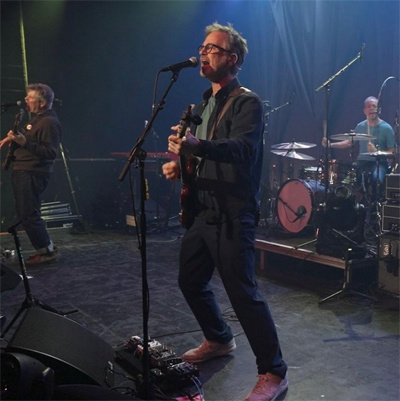
The You’re Not Alone EP has five tracks. How many songs did you guys start with? Is more new music on the horizon?
The number of songs we tracked for the EP was somewhere around 12. Dan always writes so many songs. Getting a song onto a Semisonic album is kind of like a March Madness bracket. (laughter) You’ve just got so many of them. For Feeling Strangely Fine he wrote 60 songs, we learned 30 of them, recorded 20 of them, mixed 16 of them and chose 12 to put on the album. It was the same for All About Chemistry, and I’d say we’re probably in a very similar situation for the next record that we’re putting out.
So there’s always this crazy “playoffs” where you really like this song, but then along comes Michigan State and just pummels it. (laughter) You’re like, “Okay, we’ve got to go with this song over here.” Some songs, however, hang in there all the way through to the end and make it onto the record. Sometimes it’s the unlikely ones, where something about them continues to haunt you so powerfully that you hang onto them.
That’s one of the best things about Semisonic—our problem is not “Do we have enough songs?” It’s “How can we whittle down the pile?” Because Dan is just so prolific. It’s a good problem to have.
You guys are about to begin a monthlong run of shows that’s the first real touring the band has done in 22 years. What’s your favorite thing about touring, and what’s your least favorite?
My favorite thing is playing the shows, and also hanging out with Dan and John and the crew, who have been with us the whole time. Hanging out with your friends and playing the shows.
The hardest thing is just the travel. Learning how to sleep on a bus is hard to do. The way you end up doing it is, you don’t get any sleep for a week and then you’re just so tired that you can’t not sleep. So that’s the hard part.
The particular kind of tour we’ll be doing this summer has us in amphitheaters, and amphitheaters are generally in the exurbs. They’re a $40 Uber ride from nearest non-chain coffee shop or bookstore or anything that you might want to do with your day. So you’re basically just hanging out backstage at an amphitheater every day for a month.
Having said that, your day ends with a huge ovation, and you have this really ecstatic experience of making music with your best friends in front of thousands of people who paid to come see you and are really appreciative. On balance, it’s a blast—you just have to be ready for the physical demands and the hurry-up-and-wait aspect of things, which after a while can start to get to you.
How well do you know the Barenaked Ladies and Del Amitri guys?
We know the Barenaked Ladies—they’re awesome and we’ve toured with them and hung out with them and bumped into them over the years. They’re great. We’ve never met Del Amitri, but we loved their records from the early ’90s; I still remember so many of those songs. Great band. So I’m really looking forward to hearing both bands, meeting the Del Amitri guys and reconnecting with the Barenaked Ladies.
Once this run of shows is over, what’s next on the calendar for the band?
We aren’t looking too far ahead. This is the most Semisonic activity we will have had in a long, long time, so we’re kind of trying to keep our knees bent and be ready for whatever happens. We’re definitely looking forward to the next opportunity to play some more shows—I’m just not quite sure when and where that will be. And I’m sure we’re going to keep recording.
We live in three different cities now, so there’s a certain “planets lining up” with our schedules that always has to be part of the equation. The tour and the release of more new music are the two big things on tap right now. We haven’t made huge plans yet after that… but there will definitely be plans.
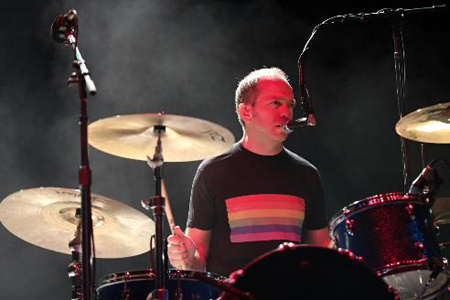
Since 2013 you’ve been teaching writing at Sarah Lawrence College in New York. What drew you to teaching? What have the best parts of that experience been for you?
I teach creative writing non-fiction, and what I love about it is that the students are writing about things that happened in their life. These are young adults, and a lot of them are writing about traumas they’ve experienced, emotional or physical or both, and some of them are writing about relationships. They’re all processing their life and trying to figure that out. It’s just so cool to be able to be there for the students; it’s a chance to try to be the professor I always wanted for myself. It’s been a really healing experience for me. It’s like I get to do college again, but maybe in the way that I would have liked it to go.
I think about creative writing in similar terms sometimes—it’s a chance to write your own backstory in the way you wanted it to come out.
Yeah, and that’s powerful. That’s a beautiful way of saying it. With my students, part of my mission is to give them a chance to own their story. Bringing their scary stuff onto the page and having their classmates read it, even if no one else ever reads it, is a big and important step for them. It’s really cool.
Do your students ask you about Semisonic? Are they curious about that part of your life?
Some of them do. Some of them are completely in the dark, but some will Google me and find out. Some of them are musicians and are curious about what it’s like to be a musician.
You’re working on another memoir. What do you feel comfortable telling us about it at this stage?
Music shows up in it, but it’s not focused on music like my last book. I’m kind of reluctant to say more; I don’t want to paint myself into a corner by talking too much about it. I’ve been through many drafts of it, and I’m still not at a place where I feel like it’s clear enough to speak for me.
I’m going to see if I can work on it while I’m on the road. I’m really hoping I can, because it’s so hard to write during the school year. A month of my summer vacation is going to be on the road with the band and I just need to find a way to get an hour or two a day of writing in.
The topic of the book is close to home for me. It’s something that I have difficulty talking about, which is why I’m writing the book. And talking about the book that’s about the thing that I have difficulty talking about is… (laughter)… like, exponentially difficult. So I’ll just say that much for now.
(Many thanks to Jake for speaking with us—visit him and the band at semisonic.com)